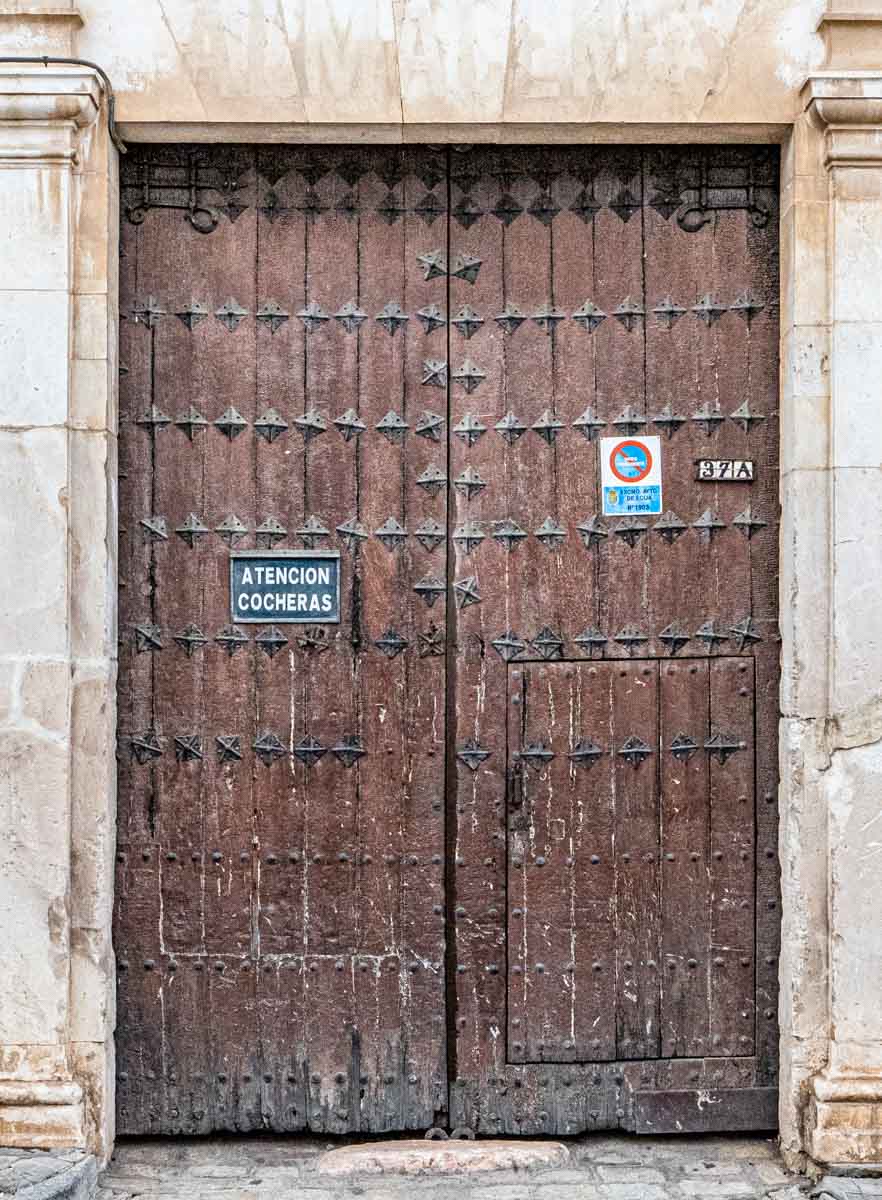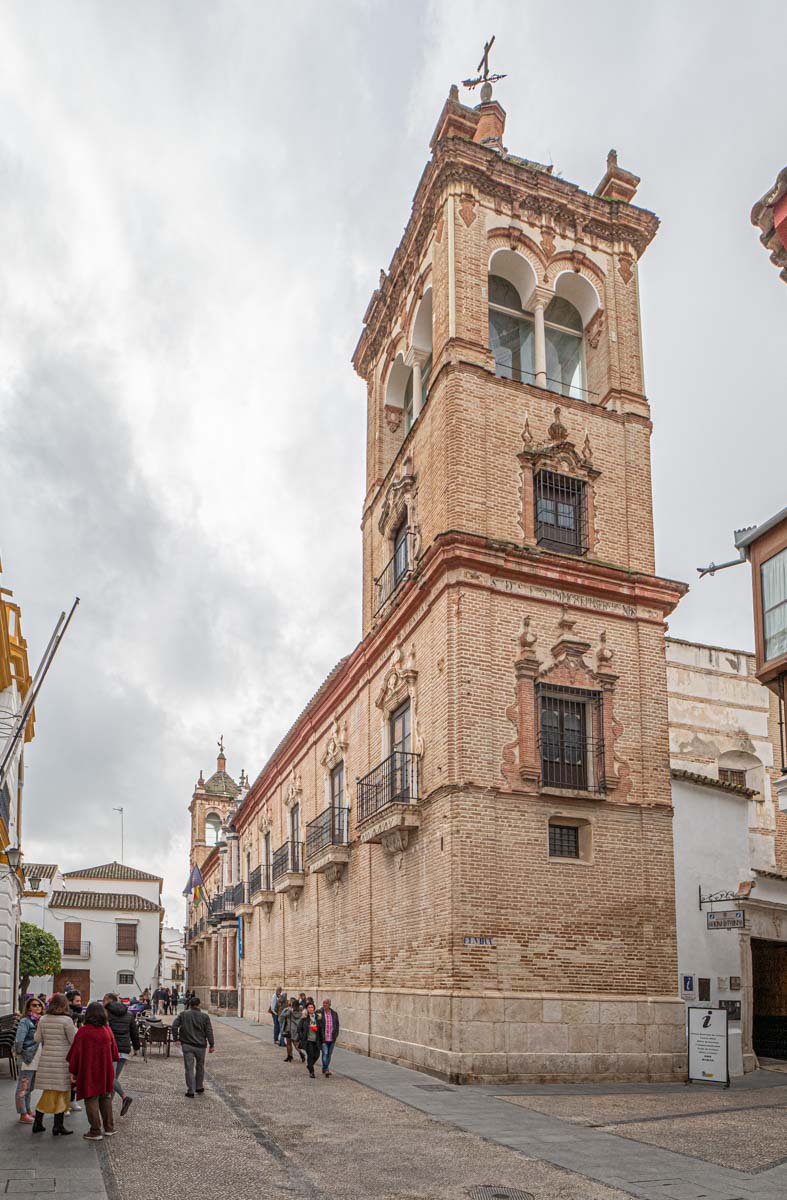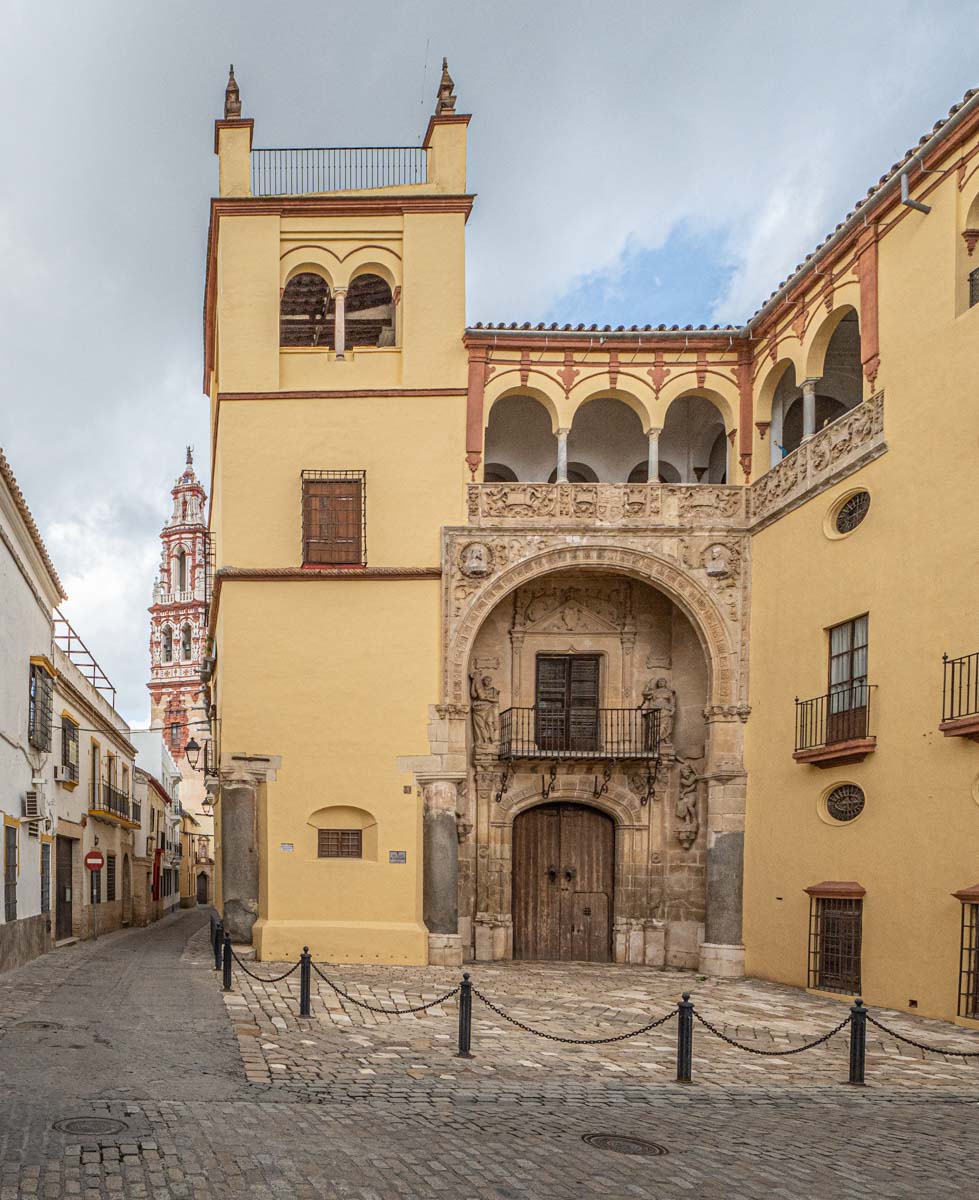Only 25 miles to drive today to Ecija, the next on list of Guardian recommended towns.
The drive was through a flat plain which, unusually for this part of Spain, was covered in fields growing wheat or barley rather than the usually ubiquitous orange and olive groves.
All went well until we reached the town where SatNav set a course to our preferred overnight stop. SatNav is supposed to know about Basil’s dimensions and avoid inappropriate roads, but regular readers of this blog will know, SatNav is not too bright in the narrow roads department.
As we were to find during our later perambulations central Ecija entirely consists of narrow cobbled roads barely wide enough for a small car. SatNav plotted a route directly through this area.
Sarah was already clutching her head as we emerged onto the Plaza Espana, the very centre of the town and after navigating past the bemused looking shoppers we headed down yet another cobbled street, which, to be fair, did have a sign prohibiting vehicles over 3.5 tonnes.

Basil is 4.25 tonnes, but in city centres we have, on a number of occasions, ignored 3.5 tonne restrictions because we know there are motorhomes of a similar size to Basil which are under this weight. On this occasion we should have paid attention.
We continued down this road for about 150 metres with pedestrians pressing themselves against the walls to avoid being squashed when we reached a 90 degree right hand turn. We immediately realised that there was no way we could get round the corner. Finally Basil had become stuck.

Luckily for us, almost immediately a friendly policeman appeared at my window and made it clear I had to reverse. I have to say reversing Basil down 150 metres of narrow cobbled street while being directed by the police and watched by incredulous passers by was not a stress free experience!
As I finally emerged onto the square our friendly policeman pointed at the 3.5 tonne restriction sign and I tried to make a face that said “silly me for missing that officer”. I think I was lucky to avoid a fine.
We beat a hasty retreat the way we had come, finally found somewhere to pull over to look for a better route and eventually found ourselves in a small car park next to Ecija’s river (37.545937, -5.075932).
Ecija is known as the “frying pan of Spain” due to the extremely high temperatures in the summer. Fortunately for us it was a pleasant 17 degrees. We first rushed to the Tourist Information (every town in Spain, however small, seems to have one) to pick up a map and after a quick look round the Plaza Espana, this time on foot, we found a tapas bar for our first eating out experience of the trip. Unfortunately it was not the best tapas we have ever had, but it was extremely filling and set us up for our exploration of the town.
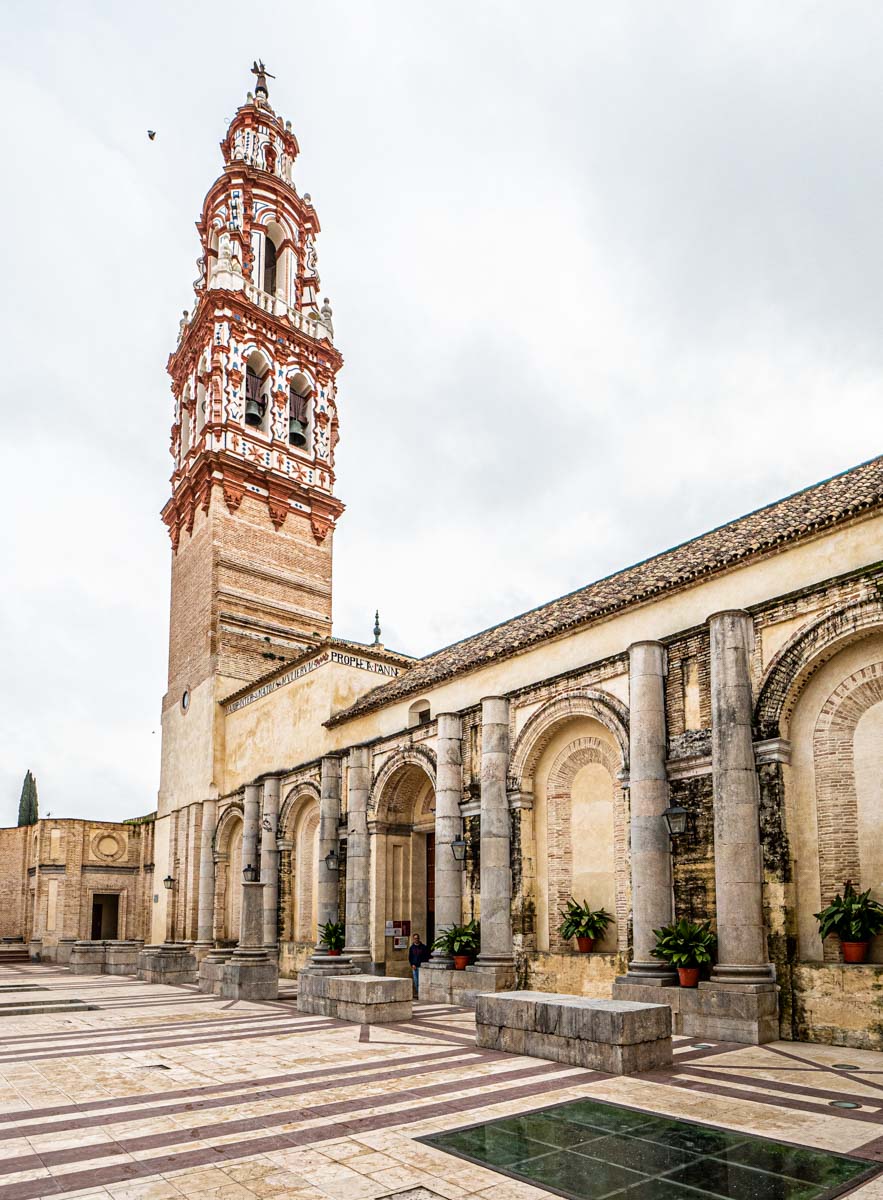
The town is known for its many towers and it’s churches, convents and monasteries certainly had plenty, many of them decorated in mudejar style. This is a style of architecture unique to Spain and Portugal which incorporates some vaguely islamic design influences due to some of the craftsmen that stayed in the Iberian Peninsular after the Christian reconquest.
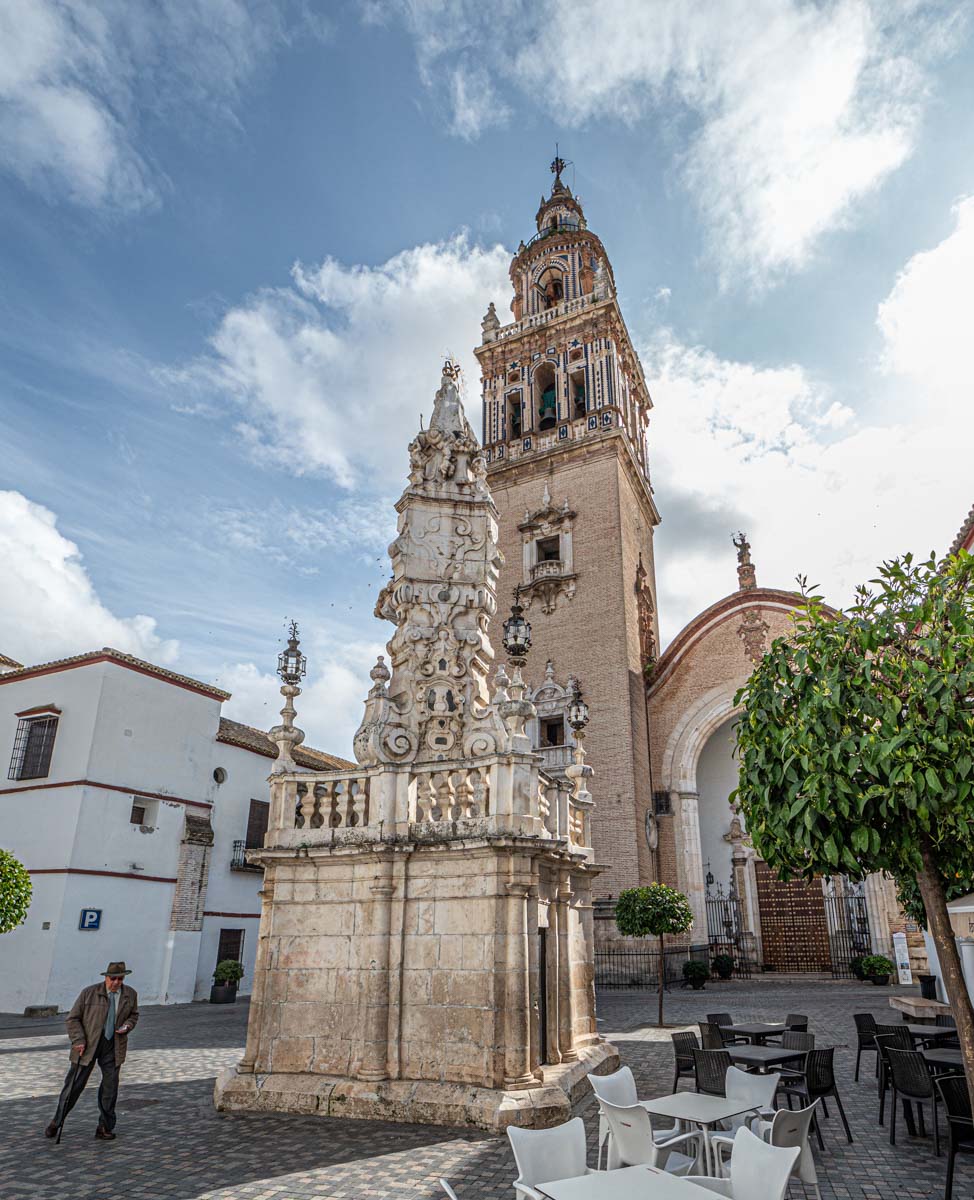
As I have already mentioned, a large central area in Ecija consists of narrow cobbled streets not really suited to cars, but that doesn’t stop them.

The Guardian has done well with its second recommendation. Ecija is a lovely place to slowly wander round. None of it’s monuments stand out on their own, except perhaps the claimed longest balcony in Europe on the Palace of Penaflor, but taken together they make an excellent place to explore for a day.
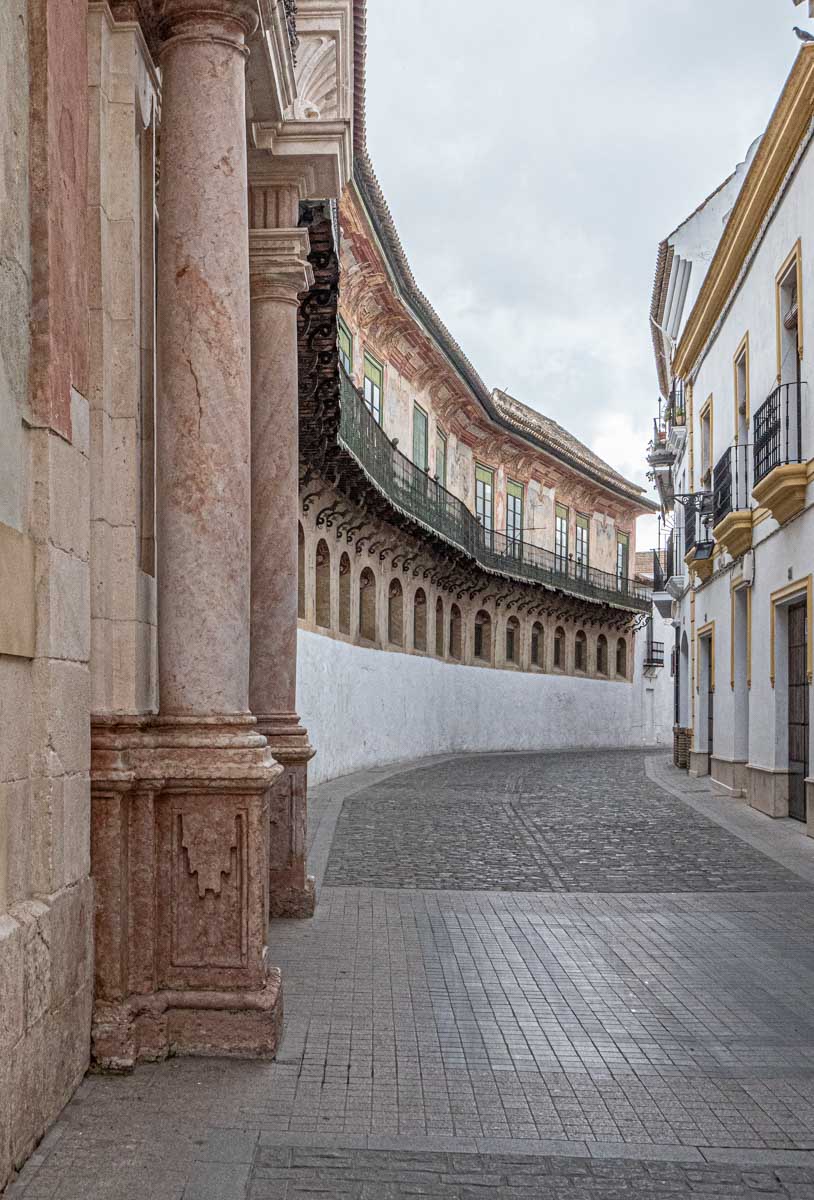
I should say that they have a museum with an excellent collection of Roman mosaics, including a rare statue of an Amazon recently discovered, but our dog restrictions prevented us from exploring that.
